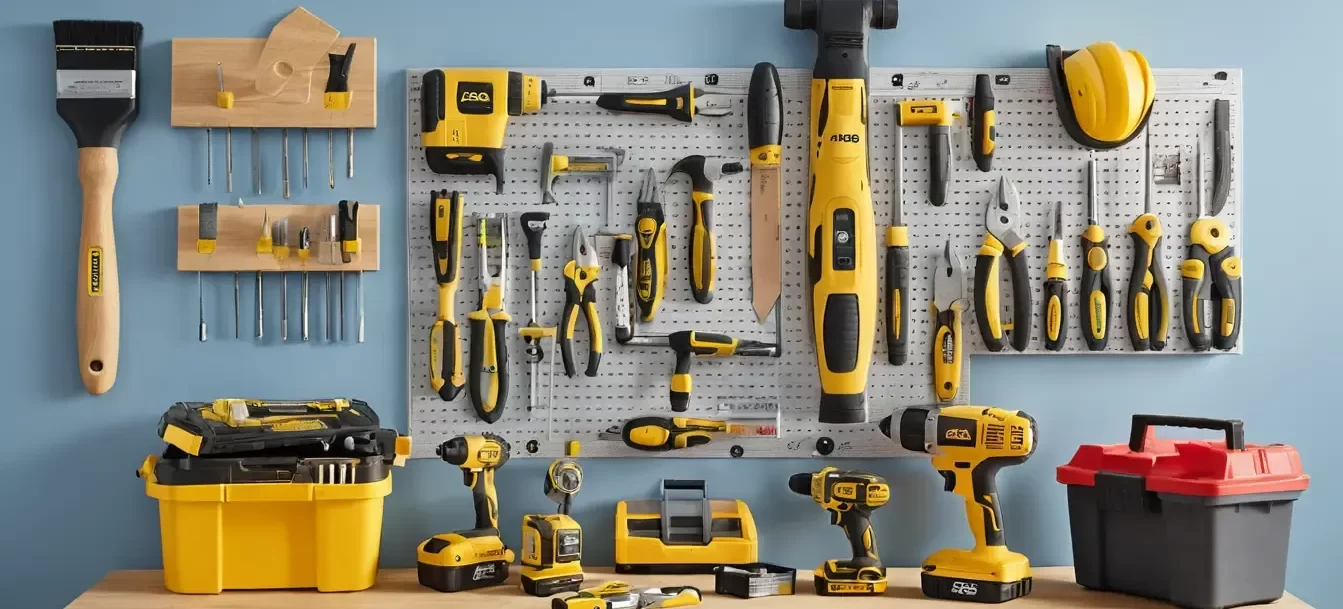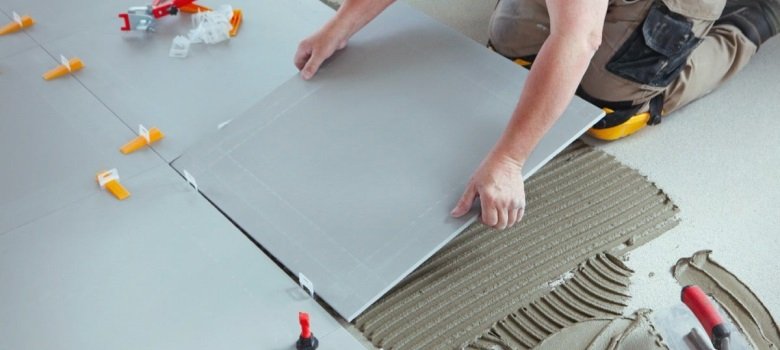Home renovation is an exciting journey, but it can also be a complex one, requiring careful planning and smart budgeting. Whether you’re looking to add value, modernize, or simply make your space more functional, a well-executed renovation can transform your home. However, for many Irish homeowners, knowing where to start can be a daunting challenge. This guide provides a comprehensive step-by-step plan for approaching your renovation project, with specific tips for homeowners in Ireland to navigate local regulations, weather considerations, and design trends.
1. Define Your Goals and Vision
Before diving into any project, it’s essential to clarify your renovation goals. Start by asking yourself what you hope to achieve. Are you renovating to add resale value, create more space, or update an older home to modern standards? Having a clear vision will help you focus and make decisions throughout the renovation process.
Consider the unique aspects of Irish homes and lifestyle. For instance, many homeowners want to optimize their homes for Ireland’s damp and chilly climate by adding insulation, installing energy-efficient windows, or creating warm, comfortable interiors. Make a list of your priorities and note any specific styles or features you want, such as a cozy living room fireplace, a spacious open-plan kitchen, or even a sunroom to enjoy those occasional sunny days.
2. Create a Realistic Budget
Budgeting is a crucial part of any renovation. Set a realistic budget by determining how much you’re willing and able to invest. Renovation costs vary widely depending on the scale and nature of the project.
For a rough guide, here’s a breakdown of potential costs:
- Minor renovations (like redecorating a room): €1,000 – €5,000
- Moderate renovations (like updating kitchens or bathrooms): €10,000 – €30,000
- Major renovations or extensions: €30,000 and upwards
Factor in additional costs such as VAT, professional fees, and a contingency of about 10-15% to cover unexpected expenses. Remember that it’s generally more affordable to renovate in phases rather than taking on multiple large projects at once.
3. Get to Know Local Regulations and Permits
In Ireland, certain types of renovations require planning permission, especially those that involve structural changes, extensions, or alterations to a home’s exterior. Before you begin, check with your local council to understand the necessary permits and permissions.
Typically, minor home improvements don’t require planning permission, but larger projects such as building an extension or converting a garage might. Getting advice from a registered architect or surveyor can be helpful here, as they’ll be familiar with local planning regulations and can guide you through the application process.
Additionally, certain changes, like improving energy efficiency, might qualify for government grants under the Sustainable Energy Authority of Ireland (SEAI). It’s worth exploring whether your renovation can benefit from these grants, which can reduce costs for energy-saving measures like insulation, heating controls, or solar panel installation.
4. Select a Skilled, Reputable Contractor
The success of your renovation largely depends on the contractor you choose. Look for a contractor with proven experience, particularly with similar projects and in homes similar to yours. Recommendations from friends or family can be a good place to start, but also look at online reviews and request references from potential contractors.
When selecting a contractor, get at least three quotes to compare prices and timelines. Beware of any quote that’s significantly lower than the others—it could indicate lower quality materials or rushed work. Ensure that your contractor is registered, insured, and provides a detailed, written contract that specifies the scope of work, budget, and timeline. For larger projects, you may also consider a project manager to oversee the work and ensure everything runs smoothly.
5. Design and Plan with Functionality in Mind
Irish homes often need special considerations due to climate, design trends, and specific functionality requirements. A good design considers not only aesthetics but also comfort and efficiency.
- Insulation and Energy Efficiency: Given Ireland’s often chilly, damp climate, adding insulation to walls, floors, and roofs can make a significant difference in comfort and energy costs. Double or triple-glazed windows are also a worthwhile investment.
- Open-Plan Living Spaces: Open-plan layouts have grown in popularity as they create a more spacious feel, ideal for smaller homes. Knocking down non-structural walls or adding large-format tiles in 60×120 cm or similar can help achieve this look.
- Storage Solutions: Clever storage solutions are essential, especially in older homes with smaller rooms and limited storage options. Consider custom-built shelving, under-stair storage, or integrated cabinets.
- Natural Light: Bringing more natural light into your home can greatly improve its look and feel. Skylights, large windows, or even glass doors can make spaces brighter and more inviting.
Collaborate with an architect or interior designer to refine your design ideas. Professionals can help optimize your layout, advise on materials, and make sure your vision translates practically into the space.
6. Consider Sustainable and Eco-Friendly Options
Sustainable renovations aren’t just good for the planet—they can also add long-term value to your home. In Ireland, where energy efficiency is a high priority, investing in eco-friendly solutions like solar panels, heat pumps, or rainwater harvesting systems can have significant benefits.
When choosing materials, opt for sustainable options like reclaimed wood, recycled tiles, or eco-friendly paints and finishes. These materials not only reduce the environmental impact but can also add a unique touch to your home’s design.
Ireland’s SEAI also provides grants for energy-efficient renovations. These grants can help cover the costs of upgrades like insulation, solar panels, or heating control systems, so it’s worth exploring available incentives to maximize your budget.
7. Plan for Disruption and Prepare a Temporary Setup
Home renovations often disrupt daily life, so planning ahead can help minimize the inconvenience. This is especially important for extensive projects like kitchen or bathroom renovations, which can require temporary setups. For example, if you’re renovating your kitchen, consider setting up a small kitchenette in another room with essentials like a kettle, microwave, and mini fridge.
For larger renovations that involve multiple rooms, you may need to temporarily move out or stay with family or friends. Factor in these logistical needs when setting your timeline, and be realistic about how long the project might take.
8. Focus on Quality Finishes and Durable Materials
Quality finishes and materials ensure that your renovation stands the test of time. For surfaces that get frequent use, like kitchen counters, bathroom floors, and exterior cladding, opt for durable materials like quartz, porcelain, or weather-resistant composite.
In Ireland, where dampness can be an issue, materials that are moisture-resistant and easy to maintain are particularly important. Choose finishes and fixtures that will hold up well in humid conditions, such as sealed stone countertops or stainless-steel fittings.
Also, consider finishes that are easy to clean and maintain. For instance, using high-quality grout and tile adhesive will prevent issues like cracking or mold, especially in bathrooms and kitchens.
9. Don’t Forget About Landscaping and Outdoor Spaces
Your home’s exterior is just as important as the interior. A well-designed outdoor space can add value, curb appeal, and extra living space for entertaining and relaxing. If your renovation budget allows, consider incorporating landscaping improvements like a paved patio, garden beds, or even an outdoor dining area.
For Irish weather, covered outdoor areas or waterproof patio furniture can make outdoor spaces more usable year-round. Additionally, elements like exterior lighting or pathways can improve both functionality and aesthetics, making your outdoor space an attractive part of your home.
10. Keep an Eye on Trends—but Plan for Timeless Appeal
Trends can be a great source of inspiration, but a well-designed renovation should aim for timeless appeal to ensure your home looks great for years to come. In Ireland, recent trends have included Scandinavian-inspired interiors, natural textures, and soft color palettes that suit the local climate.
However, when choosing finishes, furniture, and decor, prioritize functionality and your personal style over fleeting trends. Choose neutral colors for large surfaces and furniture pieces, and reserve trendy colors or patterns for easily replaceable items like paint, cushions, or artwork.
Conclusion
Home renovation is a rewarding yet challenging endeavor that can dramatically transform your living space. By following this guide and carefully planning each step, Irish homeowners can achieve a functional, beautiful, and comfortable home. Start with a clear vision and realistic budget, work with skilled professionals, and don’t overlook practical considerations for Ireland’s unique climate and lifestyle. With attention to detail, patience, and a bit of creativity, your renovation can turn your house into the home of your dreams.




